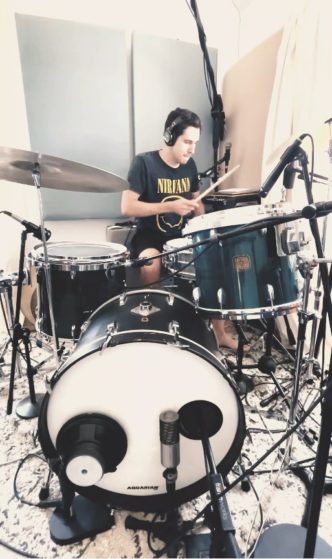In my last post, I began to create a percussion part based on the timing of the Golden Section by dividing an 8 bar phrase into relevant ‘phi points’. I realized that for building a beat it was better to think in terms of 1 bar instead of 4, so I kept my main time ratios, but condensed them from 8 seconds to 2 seconds. I then went a step further by dividing up the large sections into more phi sections to reveal more points for our beat. A/B = 1.618. Likewise, B/C = 1.618 and so on. I worked my way all the way down to an E section. What you see here in the top of the image is our basic 2 second span divided into A and B with the hit at 1.236 (the main phi point of the span). On the next line, I divided A into its Golden Ratio revealing sections B and C. As mentioned earlier, I continued this process all the way down to an E section. So now, including a beat at 0 secs, we’ve got 8 relevant phi points. This is perfectly suited to a one bar drum pattern. Here’s how the sections break down:
One Bar Beat at 120 bpm = 2 secs.
Section A = 1.236 secs.
Section B = .764 secs.
Section C = .472 secs.
Section D = .292 secs.
Section E = .180 secs.
All sections are 1.618x larger than the previous one. I think that point dividing the whole 2 second bar into phi should be stressed, as well as the beat at zero. From there, the accents should decrease according to how minor a point gets. I strung together a line of D, E, D, E, D, D, E, D to form the bongos. This would also be ideal for a high-hat or tambourine. I then put different percussion instruments on the C and D sections’ points (a bit louder). Finally, I put major hits (bass part changes) at the start and on the point between A and B.
The final string of hit points look like this:
0.000 secs.
0.292 secs.
0.472 secs.
0.764 secs.
0.944 secs.
1.236 secs.
1.528 secs.
1.708 secs.
I then rendered the beat in a step-sequencer, and looped the bar 8 times, then copied that to make a 16 bar phrase. For extra fun, I added regular quarter notes using a brush snare on the second 8 bar section to hear how a phi beat works against our traditional time system. I must say, it all sounds pretty golden!



